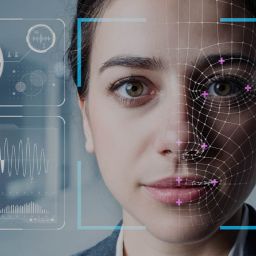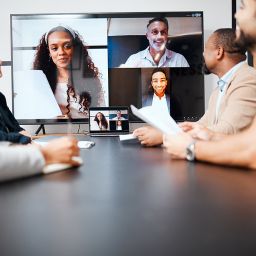We don’t need sweeping global statistics to realize the importance of mental health problems in today’s society. It’s enough just to ask a few people you know about symptoms of stress, anxiety, depression and burnout.
Cases diagnosed as severe, which prevent people from maintaining a functional life, usually end up in the hands of a specialist. But most of us experience significant levels of anxiety or stress several times a year, which we manage as best we can.
There are many causes for these sensations in our body and mind. Sometimes it’s a matter of difficult situations, such as illness of a loved one, or more day-to-day situations, like a peak in workloads, getting stuck in traffic or moving apartment. Juggling all this is not always easy, but realizing how we react to certain events, using self-help tools and seeking professional support are resources available to almost all of us.
Can’t live without your cell phone? There’s a reason for that
Besides these one-off circumstances, an increasing number of studies indicate that the digital context in which we live, with devices that constantly keep us connected, are a major source of stress, anxiety and dissatisfaction, both at home and in the office.
Just think for a moment: How often do you check your email? How many notifications do you receive on your cell phone? How often do you get interrupted in meetings? How much leisure time do you spend swiping from one video to the next? How often do your plans change at the last minute?
In this environment, many executives feel trapped in a dual spiral of dependence. Firstly, they find it very difficult to stop working, either at home or on vacation: the fact you can connect wherever you are also means you feel you must, and that you are essential 365 days a year. There is always something else that needs doing. And secondly, unlimited access to new information and business data, updated in real time, also produces disturbances that affect your well-being and decision-making.
Obviously, technology today is an essential tool for work, communication, expressing yourself, promoting social movements and learning. But the business models behind most devices and apps on the market are based on a very clear goal: making us spend as much time as possible using them.
The barrage of content, notifications, news, articles, messages, videos, updates, emojis and likes acts on our brain as a continual stream of stimuli containing short moments of gratification. Each ring or red bubble you see on the screen is an incentive that makes us feel good for an instant, but which leads to mental loss of focus, stress, FOMO syndrome, inefficiency and addictive behaviors.
Unlike the sort of interruption caused by a phone call or a visit to the office, digital notifications have an immediate impact on our perception, in the form of reward. Thus, technology becomes a lifesaver rather than a medium to help us and, with no prior warning, occupies the things that are most valuable to us: our time and our attention.

Digital calm in 7 steps: reboot your relationship with technology
According to IESE Professor Sandra Sieber, sooner or later “we all experience a degree of digital fatigue”. This is why we need to revise our relationship with devices, align them with our values and recover control. Set times aside for “digital detox” or gradually change your habits towards so-called “digital minimalism”.
It is not a matter of becoming an executive wellness guru overnight. But if you want to take control of your daily life, live more healthily and prevent burnout in you and your team, analyze the habits you have acquired, recognize their consequences and apply small changes to them that could have a crucial impact.
1. Turn off notifications
For all apps and on all devices. Notifications constantly interrupt us without our permission and direct our immediate attention to something we hadn’t expected. To re-educate yourself, start by turning them all off and see what happens. If, after a few days you have missed something truly important, then you can turn on only the ones you really need.
2. Examine how you use email
For many people, this is the most frequently used tool during the day, but most of us use it very inefficiently. Separate your personal account from your professional account and also the devices or apps you use to access your email. This is the only way to avoid continually mixing up issues while establishing clear lines for work time and personal time.
It is also a good idea to assign a specific time to accessing your email. Checking it two or three times a day for a specific, limited period is considered an efficient habit. And of course, turn off notifications to avoid being connected all the time.
3. Respect your vacations: prepare a list of priorities
As the vacation period gets closer, make sure you can disconnect from work, whatever the responsibilities that come with your position. It is hardly ever worthwhile spending your free time thinking about what you’ll do when you get back, or logging on every two or three days to check that everything is all right. To let your body and mind take the time they need to rest, prepare a list of priorities before leaving and then forget about them. Don’t worry, they’ll be waiting for you when you get back.
4. Organize your apps and delete the ones you don’t use
Your cellphone apps define how you spend your time and attention. Think which ones you use the most and why; then clean your smartphone of useless apps and delete those you haven’t opened for some time. Keep only the ones that really provide value, organize them into categories and save the home screen for those you use every day.
5. Decide when to connect and when not
Do you ever go anywhere without your cellphone? It makes you dizzy just thinking about it, doesn’t it? But it’s worth considering whether your smartphone needs to go everywhere with you. To an important meeting? To lunch? To the park with your kids? To bed? Reserving cell phone-free spaces during your day can be very useful for taking back control in your relationship with the digital world.
6. Let your teams disconnect too
Except for those emergencies that really need it, avoid using devices outside working hours. Program emails to arrive during work hours and, if you send a message later, make it clear to your employees that they don’t need to answer right away. Make sure your teams also respect each others’ down time and program in-person and online meetings only during working hours.
7. Keep an eye on what you share and what people share with you
Do you really want to watch another video on auto-play? Was the umpteenth meme sent by your cousin really worth it? Do your friends have to watch the content you’re about to send? Be aware of your social media consumption habits to regain control of your time management and avoid making throwaway entertainment go viral.
In short, it’s not about eliminating all sources of stress. Anxiety will arrive in one way or another. The important thing is to take as long as you need to rest and disconnect, in order to recover, focus on what is really important and look after yourself and others.
IESE’s management training programs will help you redefine your priorities as a leader, manage your time better and fine-tune your leadership style.

















